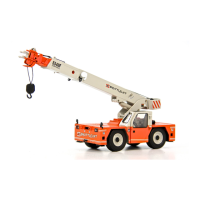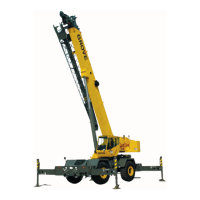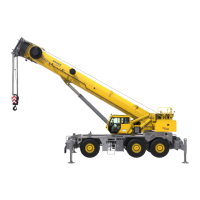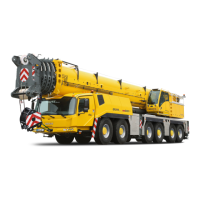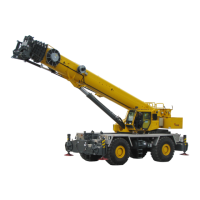GROVE 1-7
CD3340B/YB4411 INTRODUCTION
Published 04/07/2015 Control # 569-00
Installation
1. When installing a new hose, loosely connect each end
and make sure the hose takes up the designed position
before tightening the connection. Clamps should be
tightened sufficiently to hold the hose without crushing
and to inhibit chafing.
2. If a hose is replaced on a moving part, be sure it does
not foul by moving the part through its complete range of
movement.
3. Be sure any hose which has been installed is not kinked
or twisted.
4. Free moving, unsupported hoses must never touch each
other or related work surfaces. This causes chafing and
reduces hose life.
BEARINGS
Removal
1. Bearings should never be removed unless absolutely
necessary. Always use the recommended puller to
reduce the risk of bearing or related component
damage.
2. When bearings or bushings are removed, check that the
bearing is free from discoloration, nicks, scuffing, and
signs of overheating. If in doubt, replace the bearing or
bushing.
Cleaning
Bearings acceptable for service should be cleaned in a
suitable solvent and immersed in clean lubricating oil until
needed.
Installation
1. Be sure bearings are installed with care during servicing,
maintenance and repair.
2. Whenever possible, always install the bearing on the
rotating part first.
3. Use proper tools or a press when installing a bearing or
bushing.
4. In the absence of the proper tools or press, when
installing press fit bearings and bushings, heat the
bearing and/or the casing in hot oil to assist in the
installation.
HYDRAULIC PRESSURE TESTING
Prior to pressure testing, be sure all hoses are in good
condition and all fittings are tight.
Use a pressure gauge with a range that is high enough to
measure the specific pressure.
Comply with the correct procedure to inhibit damage to the
system or the equipment to eliminate the possibility of injury.
FATIGUE OF WELDED STRUCTURES
Experience has shown that highly stressed welded
structures when repeatedly subjected to varying stresses
caused by twisting, shock, bending, and intentional and/or
unintentional overloads, often become subject to weld
cracking which may be attributed to fatigue of the welded
joint. This condition is not uncommon in construction
equipment.
Equipment should be periodically inspected for evidence of
weld fatigue. The frequency of these inspections should
increase with the age of the equipment and the severity of
the application.The following are known high stress areas
applicable to Grove machines, and a visual inspection of
these areas should be made part of an owner’s planned
preventive maintenance program:
• Telescopic Boom: wear pad retaining structures,
hydraulic cylinder attaching points, boom pivot shaft
retaining structures.
• Outrigger pads, beams, boxes and attachment
structures.
• Main frame: generally in the area of doubler plates and
cross members; at the junction of front and rear frame
members on truck cranes.
• Turntable bearing connection—where bearing is welded
to the crane superstructure or chassis.
• Counterweight support structures.
• Chassis axle and suspension mounting structures.
• Hydraulic cylinder end connections.
Reference Only
